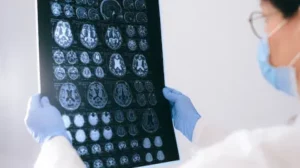Currently, there is little understanding of why 20% of significant civilian closed head injuries result in post-traumatic epilepsy, nor is there an understanding of why this epilepsy is so often resistant to treatment with currently available options. Dr. Kevin Staley and his team hypothesize that changes to the extracellular matrix, the brain’s neuronal support system, can alter the balance between inhibitory and excitatory neurotransmission and contribute to the development of difficult-to-treat epilepsy after traumatic brain injury. Using highly-innovative techniques, the team aims to obtain evidence for this hypothesis by studying traumatic brain injury in a large-animal model of brain trauma as well as utilizing biospecimens with traumatic brain injury. These experiments will provide new insights into the development of post-traumatic epilepsy, and evaluate ways to identify patients that are at highest risk for the development of this disorder.









